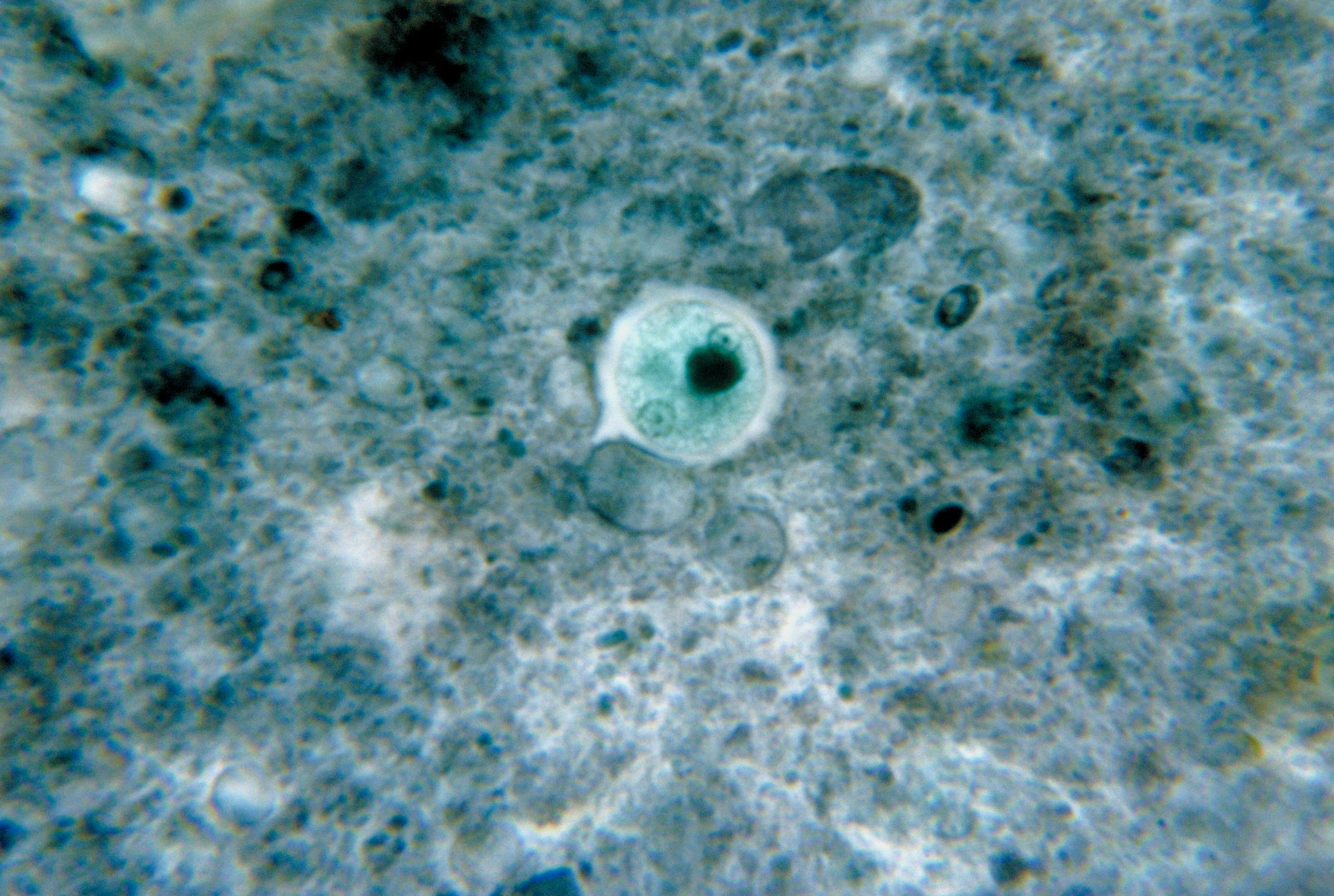|
Parr Tate
Parr Tate (27 April 1901 – 7 November 1985) was an Irish parasitologist, particularly known for his research on malaria. He spent his entire academic career in Cambridge, England, where he was Reader in Parasitology (1949–68) and head of the Department of Parasitology at the University of Cambridge, director of the Molteno Institute for Research in Parasitology (1953–68), and one of the founding fellows of what is now Wolfson College, Cambridge. He was the editor of the journal ''Parasitology'' (1952–68). Biography Tate was born in County Cork on 27 April 1901. He had severe whooping cough as a child; this required him to be educated at home and resulted in asthma, from which he never recovered. As a child he bred canaries, winning prizes with them at shows; Malcolm Peaker suggests this might have contributed to his asthma. In 1920, Tate went up to University College, Cork, of the National University of Ireland, where he graduated in zoology and botany (1923) and then ga ... [...More Info...] [...Related Items...] OR: [Wikipedia] [Google] [Baidu] |
County Cork
County Cork () is the largest and the southernmost Counties of Ireland, county of Republic of Ireland, Ireland, named after the city of Cork (city), Cork, the state's second-largest city. It is in the Provinces of Ireland, province of Munster and the Southern Region, Ireland, Southern Region. Its largest market towns are Mallow, County Cork, Mallow, Macroom, Midleton, and Skibbereen. , the county had a population of 584,156, making it the third-List of Irish counties by population, most populous county in Ireland. Cork County Council is the Local government in the Republic of Ireland, local authority for the county, while Cork City Council governs the city of Cork and its environs. Notable Corkonians include Michael Collins (Irish leader), Michael Collins, Jack Lynch, Mother Jones, Roy Keane, Sonia O'Sullivan, Cillian Murphy and Graham Norton. Cork borders four other counties: County Kerry, Kerry to the west, County Limerick, Limerick to the north, County Tipperary, Tipperary ... [...More Info...] [...Related Items...] OR: [Wikipedia] [Google] [Baidu] |
George H
George may refer to: Names * George (given name) * George (surname) People * George (singer), American-Canadian singer George Nozuka, known by the mononym George * George Papagheorghe, also known as Jorge / GEØRGE * George, stage name of Giorgio Moroder * George, son of Andrew I of Hungary Places South Africa * George, South Africa, a city ** George Airport United States * George, Iowa, a city * George, Missouri, a ghost town * George, Washington, a city * George County, Mississippi * George Air Force Base, a former U.S. Air Force base located in California Computing * George (algebraic compiler) also known as 'Laning and Zierler system', an algebraic compiler by Laning and Zierler in 1952 * GEORGE (computer), early computer built by Argonne National Laboratory in 1957 * GEORGE (operating system), a range of operating systems (George 1–4) for the ICT 1900 range of computers in the 1960s * GEORGE (programming language), an autocode system invented by Charles L ... [...More Info...] [...Related Items...] OR: [Wikipedia] [Google] [Baidu] |
Red Blood Cell
Red blood cells (RBCs), referred to as erythrocytes (, with -''cyte'' translated as 'cell' in modern usage) in academia and medical publishing, also known as red cells, erythroid cells, and rarely haematids, are the most common type of blood cell and the vertebrate's principal means of delivering oxygen () to the body tissue (biology), tissues—via blood flow through the circulatory system. Erythrocytes take up oxygen in the lungs, or in fish the gills, and release it into tissues while squeezing through the body's capillary, capillaries. The cytoplasm of a red blood cell is rich in hemoglobin (Hb), an iron-containing biomolecule that can bind oxygen and is responsible for the red color of the cells and the blood. Each human red blood cell contains approximately 270 million hemoglobin molecules. The cell membrane is composed of proteins and lipids, and this structure provides properties essential for physiological Cell (biology), cell function such as erythrocyte deformabil ... [...More Info...] [...Related Items...] OR: [Wikipedia] [Google] [Baidu] |
Sporozoite
Apicomplexans, a group of intracellular parasites, have life cycle stages that allow them to survive the wide variety of environments they are exposed to during their complex life cycle. Each stage in the life cycle of an apicomplexan organism is typified by a ''cellular variety'' with a distinct morphology and biochemistry. Not all apicomplexa develop all the following cellular varieties and division methods. This presentation is intended as an outline of a hypothetical generalised apicomplexan organism. Methods of asexual replication Apicomplexans (sporozoans) replicate via ways of multiple fission (also known as schizogony). These ways include , and , although the latter is sometimes referred to as schizogony, despite its general meaning. Merogony is an asexually reproductive process of apicomplexa. After infecting a host cell, a trophozoite ( see glossary below) increases in size while repeatedly replicating its nucleus and other organelles. During this process, ... [...More Info...] [...Related Items...] OR: [Wikipedia] [Google] [Baidu] |
Sydney Price James
Lieutenant Colonel Sydney Price James (17 September 1870 – 17 April 1946) was a British physician, parasitologist, and malariologist who served in the Indian Medical Service. Life and work James was born at Highgate to the Hereford family of Thomas Edward and Margaret, daughter of Rev. George Price. As a child he read books on travel and adventure and took a keen interest in outdoors natural history. An older brother went to South Africa with the navy and died from malaria in 1900, another was a keen photographer who invented Velox paper, and still another became a farmer in Rhodesia. He went to study medicine at Guy's Hospital but a scholarship at St Mary's Hospital made him move and he graduated in 1895. He joined the Indian Medical Service in 1896 and trained at Netley before reaching Bombay. He was posted in Waziristan in 1897 to deal with a plague outbreak and later joined the Tochi Valley Expedition during which he was invalided by typhoid back to England. During this ... [...More Info...] [...Related Items...] OR: [Wikipedia] [Google] [Baidu] |
Plasmodium Gallinaceum
''Plasmodium gallinaceum'' is a species of the genus ''Plasmodium'' (subgenus ''Haemamoeba'') that causes malaria in poultry. Description This species was described by Emile Brumpt, Alexandre Joseph Emile Brumpt (1877–1951) a French professor of parasitology during a trip to Ceylon (now Sri Lanka). Stages Oocysts must develop inside the vector (epidemiology), vector host. They are not transmissible if they enter an bird, avian host they will not develop. Sporozoites are the pathogen transmission, transmission stage. If they enter an avian host they may infect. Vectors ''Aedes aegypti'' is a vector (epidemiology), vector. ''P. gallinaceum'' manipulates ''A. aegypti'' to increase its own chances of success. Koella ''et al.'', 2002 finds that oocysts in the gastrointestinal tract, gut increase the volume of each blood meal. This lowers the chances of disgorgement of the parasites into the final host chicken (''Gallus gallus domesticus'') which is important because ooc ... [...More Info...] [...Related Items...] OR: [Wikipedia] [Google] [Baidu] |
Ann Bishop (biologist)
Ann Bishop (19 December 1899 – 7 May 1990) was a British biologist from Girton College at the University of Cambridge and a Fellow of the Royal Society, one of the few female Fellows of the Royal Society. She was born in Manchester but stayed at Cambridge for the vast majority of her professional life. Her specialties were protozoology and parasitology; early work with ciliate parasites, including the one responsible for blackhead disease in the domesticated turkey, lay the groundwork for her later research. While working towards her doctorate, Bishop studied parasitic amoebae and examined potential chemotherapies for the treatment of amoebic diseases including amoebic dysentery. Her best known work was a comprehensive study of ''Plasmodium'', the malaria parasite, and investigation of various chemotherapies for the disease. Later she studied drug resistance in this parasite, research that proved valuable to the British military in World War II. She discovered the potent ... [...More Info...] [...Related Items...] OR: [Wikipedia] [Google] [Baidu] |
Plasmodium Relictum
''Plasmodium relictum'' is a species in the genus ''Plasmodium,'' subgenus '' Haemamoeba''. It is a parasite, and the most common cause of malaria in birds. Like all ''Plasmodium'' species, ''P. relictum'' has both vertebrate and insect hosts. The vertebrate hosts for this parasite are birds. Distribution ''P. relictum'' is geographically widespread, and is the most widespread malaria parasite of birds. Climate change is broadening its distribution further and is expected to continue to do so, including into higher elevations. Hosts Avian ''P. relictum'' infects a wide variety of birds including birds from various orders Order, ORDER or Orders may refer to: * A socio-political or established or existing order, e.g. World order, Ancien Regime, Pax Britannica * Categorization, the process in which ideas and objects are recognized, differentiated, and understood * H .... Infections in numerous wild birds and experimental animals have been described including partridges ... [...More Info...] [...Related Items...] OR: [Wikipedia] [Google] [Baidu] |
Antimalarial Drug
Antimalarial medications or simply antimalarials are a type of antiparasitic chemical agent, often naturally derived, that can be used to treat or to prevent malaria, in the latter case, most often aiming at two susceptible target groups, young children and pregnant women. As of 2018, modern treatments, including for severe malaria, continued to depend on therapies deriving historically from quinine and artesunate, both parenteral (injectable) drugs, expanding from there into the many classes of available modern drugs. Incidence and distribution of the disease ("malaria burden") is expected to remain high, globally, for many years to come; moreover, known antimalarial drugs have repeatedly been observed to elicit resistance in the malaria parasite—including for combination therapies featuring artemisinin, a drug of last resort, where resistance has now been observed in Southeast Asia. As such, the needs for new antimalarial agents and new strategies of treatment (e.g., new com ... [...More Info...] [...Related Items...] OR: [Wikipedia] [Google] [Baidu] |
Avian Malaria
Avian malaria is a parasitic disease of birds, caused by parasite species belonging to the genera ''Plasmodium'' and '' Hemoproteus'' (phylum Apicomplexa, class Haemosporidia, family Plasmoiidae). The disease is transmitted by a dipteran vector including mosquitoes in the case of ''Plasmodium'' parasites and biting midges for ''Hemoproteus.'' The range of symptoms and effects of the parasite on its bird hosts is very wide, from asymptomatic cases to drastic population declines due to the disease, as is the case of the Hawaiian honeycreepers. The diversity of parasites is large, as it is estimated that there are approximately as many parasites as there are species of hosts. As research on human malaria parasites became difficult, Dr. Ross studied avian malaria parasites. Co-speciation and host switching events have contributed to the broad range of hosts that these parasites can infect, causing avian malaria to be a widespread global disease, found everywhere except Antarctica. ... [...More Info...] [...Related Items...] OR: [Wikipedia] [Google] [Baidu] |
Ringworm
Dermatophytosis, also known as tinea and ringworm, is a mycosis, fungal infection of the skin (a dermatomycosis), that may affect skin, hair, and nails. Typically it results in a red, itchy, scaly, circular rash. Hair loss may occur in the area affected. Symptoms begin four to fourteen days after exposure. The #Types, types of dermatophytosis are typically named for area of the body that they affect. Multiple areas can be affected at a given time. About 40 types of fungus can cause dermatophytosis. They are typically of the ''Trichophyton'', ''Microsporum'', or ''Epidermophyton'' type. Risk factors include using public showers, contact sports such as wrestling, excessive sweating, contact with animals, obesity, and immunosuppression, poor immune function. Ringworm can spread from other animals or between people. Diagnosis is often based on the appearance and symptoms. It may be confirmed by either microbial culture, culturing or looking at a skin scraping under a microscope. ... [...More Info...] [...Related Items...] OR: [Wikipedia] [Google] [Baidu] |
Malcolm Dixon (biochemist)
Malcolm Dixon (18 April 1899 – 7 December 1985) was a British biochemist. Education and early life Dixon was born in Cambridge, England, to Allick Page Dixon and Caroline Dewe Dixon (née Mathews). He was educated at home (having come down with tuberculosis aged 12) and at Emmanuel College, Cambridge, where he graduated with a BA in Natural Sciences in 1921 and was later an 1851 Exhibition Senior Student.) He was awarded his PhD at Cambridge in 1925, for research supervised by Frederick Gowland Hopkins. Research and career Dixon's research investigated the purification of enzymes and the enzyme kinetics of enzyme-catalyzed reactions. He studied the oxidation of glutathione and other thiols by molecular oxygen and measured the redox potential of the thiol-disulfide system, also establishing that the oxidation of glutathione was catalyzed by trace metals. He investigated xanthine oxidase, and thereby elucidated many aspects of the chemistry of dehydrogenases. He showed that the ... [...More Info...] [...Related Items...] OR: [Wikipedia] [Google] [Baidu] |





